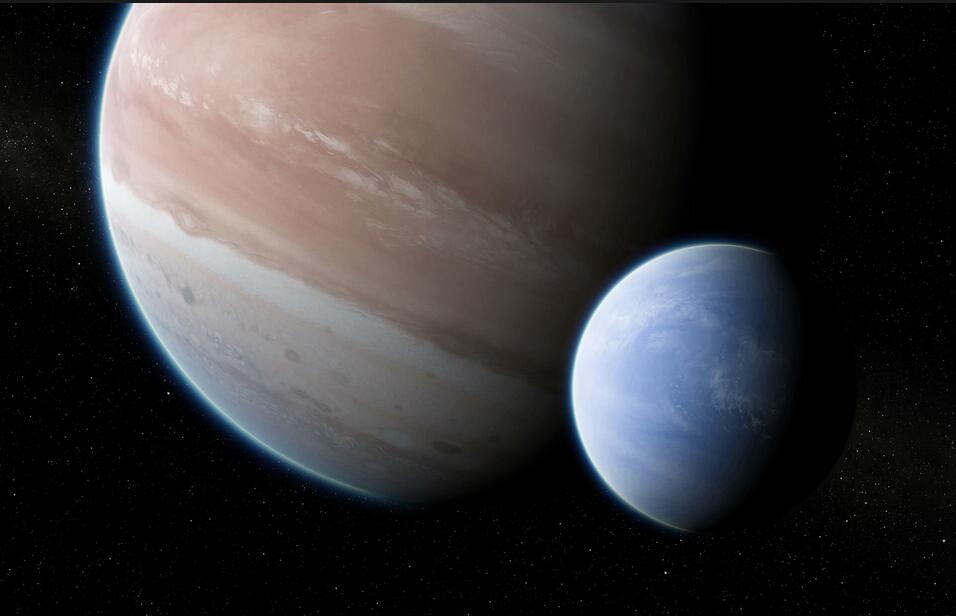WRITERS of science fiction have long assumed that the galaxy is teeming with alien planets.
科幻小说的作家们一直都认为星系中存在异形星球。
They were correct, but it was only in the past few decades that science has been able to confirm this.
他们没错,只是过了几十年后科学界才得以证实这一想法。
The first exoplanet was discovered in 1992, but the floodgates really opened in 2009, with the launch of Kepler, a planet-hunting space probe.
首个系外行星发现于1992年,但是直到2009年,开普勒星球探测器发射后,系外行星的大门才真的被打开。
Thousands have since been found. Statistics suggest that every star in the galaxy—and, presumably, the universe—has at least one.
自此有上千个系外行星被发现。数据显示星系—以及,或许宇宙—中的每颗星星至少有一系外行星。
Kepler's fuel is now almost exhausted, and the probe is nearing the end of its life.
开普勒的燃料现在几乎消耗殆尽,这个探测器也将退役。
But a paper published by AlexTeachey and David Kipping in Science Advances suggests
但是亚历克斯·提奇和大卫·基平发表于《科学进展》上的一篇论文表明

that data it has already collected may confirm another science-fiction assumption—that alien planets have alien moons.
其已收集的数据或许可以证实另一个科幻小说猜想—异形星球上有异形卫星。
In a way, this is not surprising. Few astronomers would have bet against the existence of exomoons.
在某种程度上,这一点也不意外。几乎没有宇航员会打赌外星系不存在卫星。
But they might have been sceptical that Kepler was sensitive enough to spot any. What's more, the moon that Drs Teachey and Kipping propose is strikingly strange.
但他们或许一直怀疑,开普勒足够敏感可以探测任何迹象。而且,提奇和基平博士提出的这种卫星非常奇怪。
To find their moon, the two researchers sifted through data from 284 different exoplanets that Kepler had spotted.
为了找到他们的这种卫星,两名研究人员从开普勒探测到的284种不同系外行星中筛选数据。
The probe works by monitoring hundreds of thousands of stars,
探测器的工作是监控成千上万个恒星,
watching for tiny, repeated drops in their brightness caused by a planet moving in front of the star's disk.
守候那些因行星在星盘前边的移动而造成的微妙反复的光度变化。
A planet with a moon should produce a subtly different signal,
有卫星的星球应该会产生一种稍微不同的信号
with the moon causing a second, much smaller dip just before or just after the one caused by the planet.
在行星造成倾斜前后,卫星也会导致再次造成更微妙的倾斜。
Spotting such tiny flickers is on the edge of Kepler's capabilities.
探测到如此微小的闪烁,探测器可能无能为力。
Nonetheless, Dr Teachey and Dr Kipping found one promising looking planet, with the unromantic name of Kepler-1625b.
尽管如此,提奇和基平博士还是发现了一颗很有希望的行星,它有一个很平庸的名字—Kepler-1625b。
译文由可可原创,仅供学习交流使用,未经许可请勿转载。



